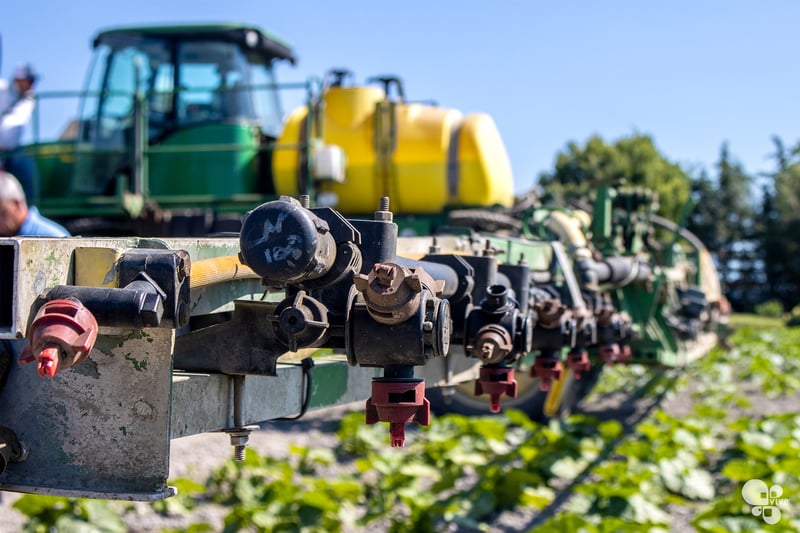February 1, 2023
By: Victoria Marsh
With the 2023 growing season right around the corner, now is the time to think over changes that can be made to your operation to optimize crop production. Taking a 30,000-foot view, the entire goal of farming is to support the growth and development of the plant to ensure the highest yield and quality. While the idea of this is straight forward, the process to get there differs greatly between growing regions and even neighboring farms.
I’m going to focus on one area of crop production that has been thoroughly researched and over time has consistently proven to increase yields: in-furrow fertility.

Starter fertilizer that is placed with the seed at planting is called in-furrow fertilizer. This method of early season fertility has been shown to support crop growth while reducing overall fertility inputs. According to a study completed by South Dakota State University that focused on corn and soybeans, the in-furrow fertility program increased yields 10% over the broadcast application method. From Michigan State University, not only did yields increase in wheat from the use of in-furrow fertilizer, but it also reduced nitrogen losses due to volatilization and leaching, there-by increasing the nitrogen use efficiency over broadcast applications.
At this point, you may be asking yourself “why does in-furrow work so much better than broadcast?” There are several reasons for this. The simplest reason is energy. When the seed is fertilized as it is planted the nutrients are located right at the seed’s location. Once germinated the required nutrients are already within reach of the crops roots. In a broadcast system, the roots may have to grow significantly in order to reach the required nutrients in the soil. This energy expansion is “wasted” since it could have been used to help the seedling get out of the ground and start to grow more vigorously. The pop-up fertility allows for faster growth, and more nutrients put into the above ground growth sooner in comparison to a broadcast application. Also in-furrow works well due to the chemistry of soils. When nitrogen is applied to the soil by broadcasting, there are two major transformations that happen to the ammonium that cause it to be lost out of the plants reach: volatilization and leaching. Other nutrients like phosphorous can be bound up in mineral structures leading to low availability. Both these examples demonstrate a loss of nutrients to the plant and a reduced return on your nutrient application investment.
Other benefits that are important to think about are the reduced nutrients applied to the field. And let’s be honest, if the year is anything like 2022, reducing your nutrient applications will save you a lot of money. Secondly, you are spending less time in the field. One pass, rather than two; a broadcaster and then a planter. Thirdly, you can apply crop protection with your in-furrow application, further reducing your passes through the field, and helping increase your yields and plant health. And who doesn’t want to spend less time in the tractor?
For those of you who want to try in-furrow fertility and crop protection at planting but don’t have the equipment, there are several programs out there to help get farmers equipped. One is from the Natural Resources Conservation Service that is designed to help farmers reduce resource use and increase efficiency.
I hope this article helps you have a successful 2023 growing season.
Sources:
Wheat Fertility and Fertilization (E2526) - MSU Extension
